Stack Sports Single Sign on Failure  Please Try Again.
Unmarried Sign-On(SSO) -SAML Authentication Explained
What is Single sign-on?
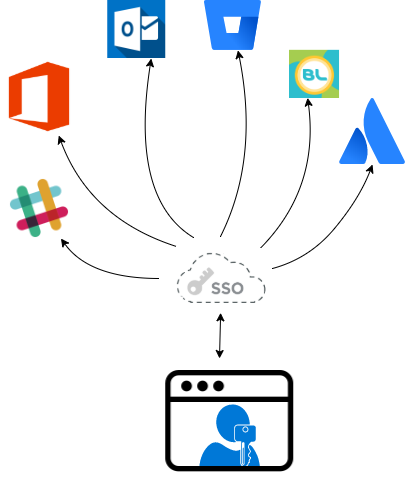
Unmarried sign-on (SSO) is a property of identity and access direction (IAM) that enables users to deeply authenticate with multiple applications and websites by logging in only one time with but i set of credentials (username and password).
This saves the user from remembering multiple usernames and passwords, while still providing strong authentication. And, once they have logged in, an end-user can access other connected spider web apps without logging in again, until their authenticated session expires.
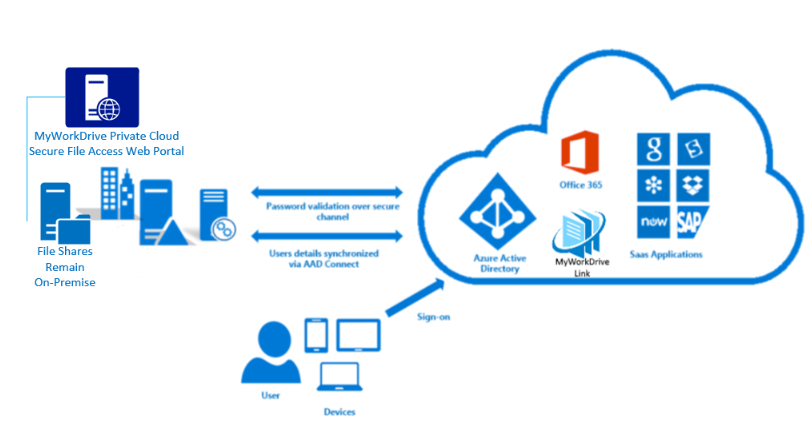
How does SSO work?
Authentication with SSO relies on a trust relationship between domains (websites). With single sign-on, this is what happens when you try to log in to an app or website:
- The website first checks to see whether you've already been authenticated by the SSO solution, in which case information technology gives you admission to the site.
- If you haven't, it sends y'all to the SSO solution to log in.
- You enter the single username/password that you lot use for corporate access.
- The SSO solution requests hallmark from the identity provider or authentication system that your company uses. It verifies your identity and notifies the SSO solution.
- The SSO solution passes authentication information to the website and returns you to that site.
- Afterwards login, the site passes hallmark verification data with yous equally you move through the site to verify that you are authenticated each time you lot go to a new page.
In SSO, authentication verification data takes the class of tokens.
SSO Strategy
SAML is an XML-based open-standard data format for exchanging hallmark and authority information betwixt parties, in detail, between an identity provider and a service provider.
OAuth is an open protocol to allow secure authorization in a simple and standard method from web, mobile, and desktop applications.
What is SAML?
Security Assertion Markup Language (SAML) is a very powerful and flexible standard for logging users into applications based on their sessions in some other context. This single sign-on (SSO) login standard has significant advantages over logging in using a username/countersign:
- No demand to blazon in credentials
- No need to recollect and renew passwords
- No weak passwords
About organizations already know the identity of users because they are logged in to their Active Directory domain or intranet. It makes sense to utilize this information to log users into other applications, such as web-based applications, and i of the more than elegant ways of doing this is by using SAML.

WHY USE SAML?
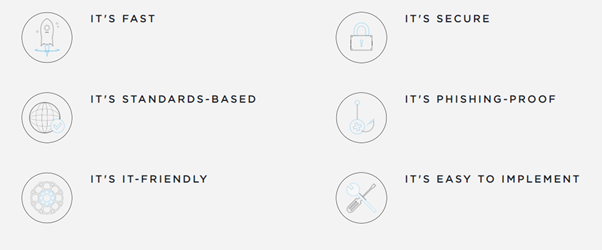
SAML is the gilded standard for single sign-on for deject apps. It eliminates all passwords and instead uses digital signatures to constitute trust between the identity provider and the cloud app. Using SAML, users can seamlessly access multiple applications, assuasive them to comport business faster and more efficiently.
SSO also helps organizations to login employes to all the organization related applications with merely a single username and password which tin we associated with their organisation and the Agile directory they are already managing and with SAML we can practise Authorization and Hallmark both.
For Example, we Integrated our BrightLab app with Organization's Azure AD to login to the application with the same visitor'due south electronic mail and they don't have to log in if already logged in to any of the application associated with same AD ie. their Outlook any other App.
User requests access Flow
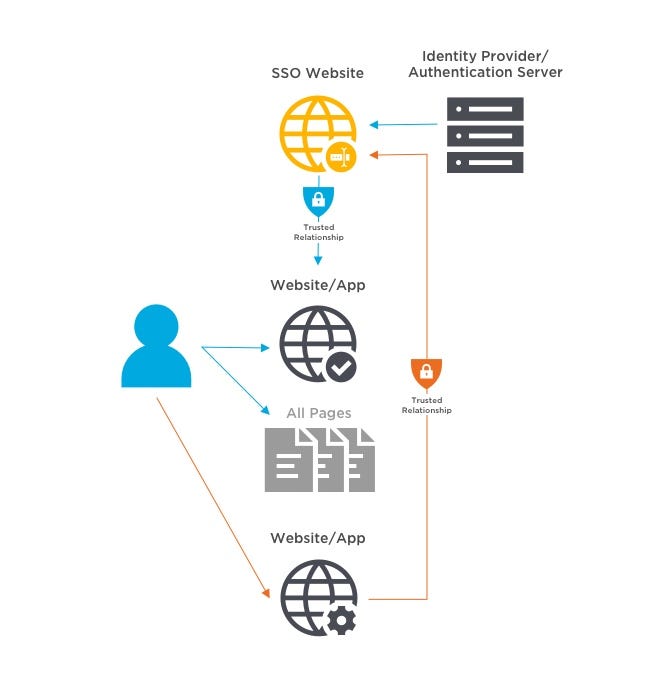
The website redirects the user to the SSO website to log in. The user logs in with a single username and password.
The SSO website verifies the user'due south identity with an identity provider, such as Active Directory.
User is granted admission then requests access to a new site
When the user tries to access a dissimilar website, the new website checks with the SSO solution. Since the user has been authenticated, information technology verifies the user'southward identity to the new website without requiring an additional login.
A Service Provider (SP) is the entity providing the service, typically in the form of an application.
An Identity Provider (IdP) is the entity providing the identities, including the ability to cosign a user. The Identity Provider typically as well contains the user profile: additional data nearly the user such every bit first name, last proper name, chore lawmaking, phone number, address, and then on. Depending on the application, some service providers may crave a very simple profile (username, email), while others may require a richer set of user information (job lawmaking, section, address, location, manager, and then on).
A SAML Request, besides known as an authentication request, is generated past the Service Provider to "request" an authentication.
A SAML Response is generated past the Identity Provider. Information technology contains the bodily assertion of the authenticated user. In addition, a SAML Response may contain additional information, such equally user profile information and group/role information, depending on what the Service Provider can back up.
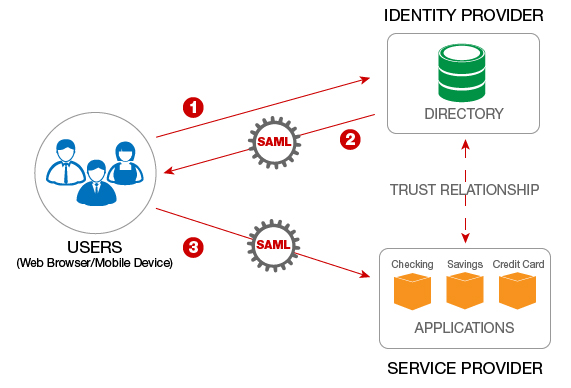
A Service Provider Initiated (SP-initiated) sign-in describes the SAML sign-in menstruation when initiated by the Service Provider. This is typically triggered when the stop-user tries to access a resource or sign in directly on the Service Provider side, such as when the browser tries to access a protected resources on the Service Provider side.
An Identity Provider Initiated (IdP-initiated) sign-in describes the SAML sign-in flow initiated by the Identity Provider. Instead of the SAML flow being triggered by redirection from the Service Provider, in this menses, the Identity Provider initiates a SAML Response that is redirected to the Service Provider to assert the user'south identity.
SAML SSO Flow
The diagram below illustrates the single sign-on flow for service provider-initiated SSO, i.e. when an awarding triggers SSO.
Identity provider-initiated SSO is similar and consists of only the lesser one-half of the flow.

How SAML Works
SAML SSO works by transferring the user's identity from i identify (the identity provider) to another (the service provider). This is done through an exchange of digitally signed XML documents.
Consider the following scenario: A user is logged into a system that acts as an identity provider. The user wants to log in to a remote awarding, such as a back up or accounting application (the service provider). The following happens:

- The user accesses the remote application using a link on an intranet, a bookmark, or similar and the application loads.
- The application identifies the user's origin (past application subdomain, user IP address, or like) and redirects the user back to the identity provider, asking for authentication. This is the authentication asking.
- The user either has an existing active browser session with the identity provider or establishes one by logging into the identity provider.
- The identity provider builds the authentication response in the class of an XML-document containing the user's username or email address, signs it using an X.509 certificate, and posts this information to the service provider.
- The service provider, which already knows the identity provider and has a certificate fingerprint, retrieves the authentication response and validates it using the certificate fingerprint.
- The identity of the user is established, and the user is provided with app access.
Implement SSO with Node.js
Implementation of SSO with SAML in Node.js using Passport.js middleware.
References :
Source: https://medium.com/brightlab-techblog/single-sign-on-sso-saml-authentication-explained-1e463b9168cb
0 Response to "Stack Sports Single Sign on Failure  Please Try Again."
Post a Comment